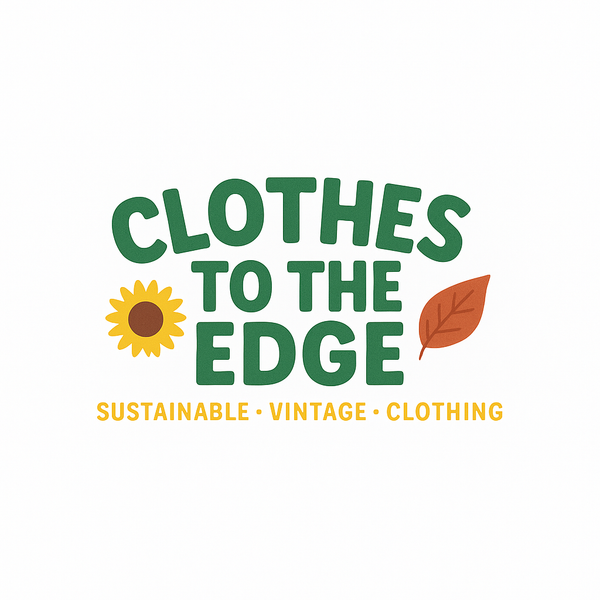As we move further into 2025, one thing is clear: the world of fashion is changing. Fast fashion’s dominance is being challenged by a rising tide of conscious consumers who are choosing to shop with intention — and vintage clothing is at the heart of this shift.
In a landscape dominated by climate conversations, the vintage clothing movement isn’t just about nostalgia or aesthetics anymore. It’s about sustainability, individuality, and resisting the disposable culture that has come to define the high street.
The Carbon Cost of Fast Fashion
The fashion industry is responsible for up to 10% of global carbon emissions and produces millions of tonnes of textile waste every year. Cheap synthetic fabrics, overproduction, and a relentless cycle of trend-based marketing have left landfills overflowing and workers underpaid.
Shoppers are beginning to make the connection between their wardrobe choices and the environment. Sustainability in fashion is no longer a niche concern; it’s now a global conversation. In response, more people are asking: Where did this come from? Who made it? How long will it last?
This is where vintage fashion offers a powerful, stylish answer.
Vintage as a Sustainable Choice
Unlike fast fashion, vintage clothing is inherently sustainable. Every pre-loved piece extends the life of a garment, reduces waste, and bypasses the emissions associated with new production. Buying vintage supports circular fashion — the idea that clothes should be worn, loved, repaired, and re-worn rather than discarded.
Moreover, vintage clothing is usually made to a higher standard. From quality materials to timeless cuts, many pieces were built to last — and have already proved that they can. Whether it's a perfectly faded 90s Levi's denim jacket or a 70s floral maxi dress, vintage items have already stood the test of time.
By choosing vintage, you're reducing demand for resource-intensive new garments and supporting a more mindful fashion cycle. You're also making a unique style statement — one that says “no” to overproduction and “yes” to individuality.
What’s Trending in Vintage Fashion Right Now?
As 2025 unfolds, several vintage clothing trends are capturing the attention of both consumers and stylists:
-
Late '90s and early 2000s nostalgia is still going strong, with cargo pants, low-rise denim, and Y2K crop tops making a major comeback.
-
Utility and workwear-inspired pieces — think boiler suits, surplus jackets, and carpenter trousers — are in high demand for their durability and effortless cool.
-
Statement coats from the 60s and 70s are flying off virtual racks, with buyers favouring bold prints, faux fur trims, and structured tailoring.
-
Gender-neutral vintage is also growing, as shoppers look for versatile pieces that reflect their identity rather than prescribed categories.
What makes these trends stand out is their roots in authenticity. These are not fast-fashion imitations — they are the real deal, often with stories stitched into every seam.
Shopping Vintage Online: What to Look For
As vintage clothing websites grow in popularity, so does the challenge of finding the right shop. Here are a few things to look for when buying secondhand or vintage clothing online:
-
Curation: A well-curated shop reflects real knowledge of fashion history and current trends. Look for stores that highlight how pieces can be styled and offer transparent details about sizing, fabric, and condition.
-
Sustainability ethos: Many vintage sellers are now sharing their environmental values upfront — whether that’s through plastic-free packaging, carbon-neutral shipping, or clothing care tips to extend garment life.
-
Authenticity: Descriptions that reference labels, construction, provenance, or designer heritage indicate a seller who values accuracy and quality.
-
Fit and care information: Because vintage sizing varies, accurate measurements and laundering advice are essential for an online purchase.
A good vintage shop doesn’t just sell clothes — it tells a story, offers styling advice, and encourages conscious consumption.
Vintage and the Future of Sustainable Style
Vintage fashion isn’t just a passing trend — it’s a cultural shift. With younger generations embracing thrifting, resale platforms booming, and luxury designers mining archives for inspiration, secondhand is fast becoming first choice.
Consumers are increasingly aware that sustainability in fashion isn’t just about fabric; it’s about mindset. It's about buying less, buying better, and embracing style that doesn't cost the earth. When you buy vintage, you reduce textile waste, cut carbon emissions, and push back against an industry built on overconsumption.
And crucially — you look great doing it.
Final Thoughts
In a world where trends change by the week and fast fashion dominates the digital feed, choosing vintage is a bold, intelligent act. It's a vote for sustainability, for creativity, and for a future where fashion values people and planet as much as profit.
At Clothes to the Edge, we believe in the power of slow fashion. Every piece we offer has been carefully selected, not only for its uniqueness but for its place in a more ethical and beautiful fashion future. Because sustainable style isn’t just possible — it’s already happening.

